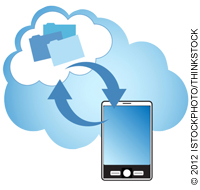
Fam Pract Manag. 2012;19(3):34
Dictate faster and for less with your smartphone

When documenting in your electronic health record (EHR), typing can be time consuming, and professional dictation can be slow and costly. Here's a way to use technology already available on your smartphone to do some of the work for you.
Using an iPhone 4S or advanced Android device, install the note-taking app PlainText (iPhone) or Epistle (Android). You will also need to create a Dropbox account. (Dropbox is a file-storage website that syncs your files, making them available from any computer or smartphone you choose; you can get a free account at http://www.dropbox.com.)
Next, open a blank note on your phone (I just keep one open at all times), press the voice recognition key, and speak freely. Siri on the iPhone is great at deciphering medical jargon, and any errors are easily corrected by tapping the word in question and selecting an alternative. PlainText or Epistle will instantly sync this note to your password-protected Dropbox account.
Switching to your charting computer, retrieve the note from Dropbox. Just navigate to the PlainText or Epistle folder, open the note, cut the text (and save the blank note so it's ready on your phone for the next patient), and paste the text directly into your EHR note. This trick eliminates the need to type furiously between patients and avoids the expense and delay of professional dictation.
Ease patients' reluctance to see a counselor
Patients can often have misgivings about being referred for counseling. To gain their commitment toward seeing a counselor, I find the following strategy useful.
First, I make it clear that I do not think they are crazy, and I am not sending them to lie on a couch and talk to someone about their mother, a comment that usually provokes a chuckle. I then proceed with a brief description of cognitive behavioral therapy in layman's terms. For example, I explain that the goal is preventing a person's mind from going down a harmful pathway when a certain situation arises and training it to go down a more helpful pathway. Next, I ask them to name one superstar athlete, successful businessperson, or multimillionaire who has not engaged in counseling. The point here is that counseling is a common intervention that can improve a person's life and chances of success. Finally, I explain that although I like seeing them, our visits can get expensive, as can all those pills they're taking, so my ultimate desire is to see them less often and get them to the point where they don't need a daily pill. In my experience, this strategy is almost universally successful.
Reduce needless ED visits
Emergency department (ED) visits for non-emergent conditions are costly and inefficient. To reduce unnecessary ED visits among your patients, try this simple, two-pronged intervention:
1. Place small posters in your waiting and exam rooms that encourage patients to contact your office before going to the ED unless they have a life-threatening problem. Point out that your office has shorter waiting times and already knows their medical history, among other benefits.
2. Identify patients who have recently visited the ED for non-emergent conditions, and send them a letter that includes the same points as above.
A family medicine clinic that implemented these interventions was able to reduce the proportion of ED visits attributed to the clinic by 0.61 percent, compared with a 0.35 percent increase in the control practice, which was statistically significant. This amounted to a savings of about 40 ED visits per month in the intervention practice.
